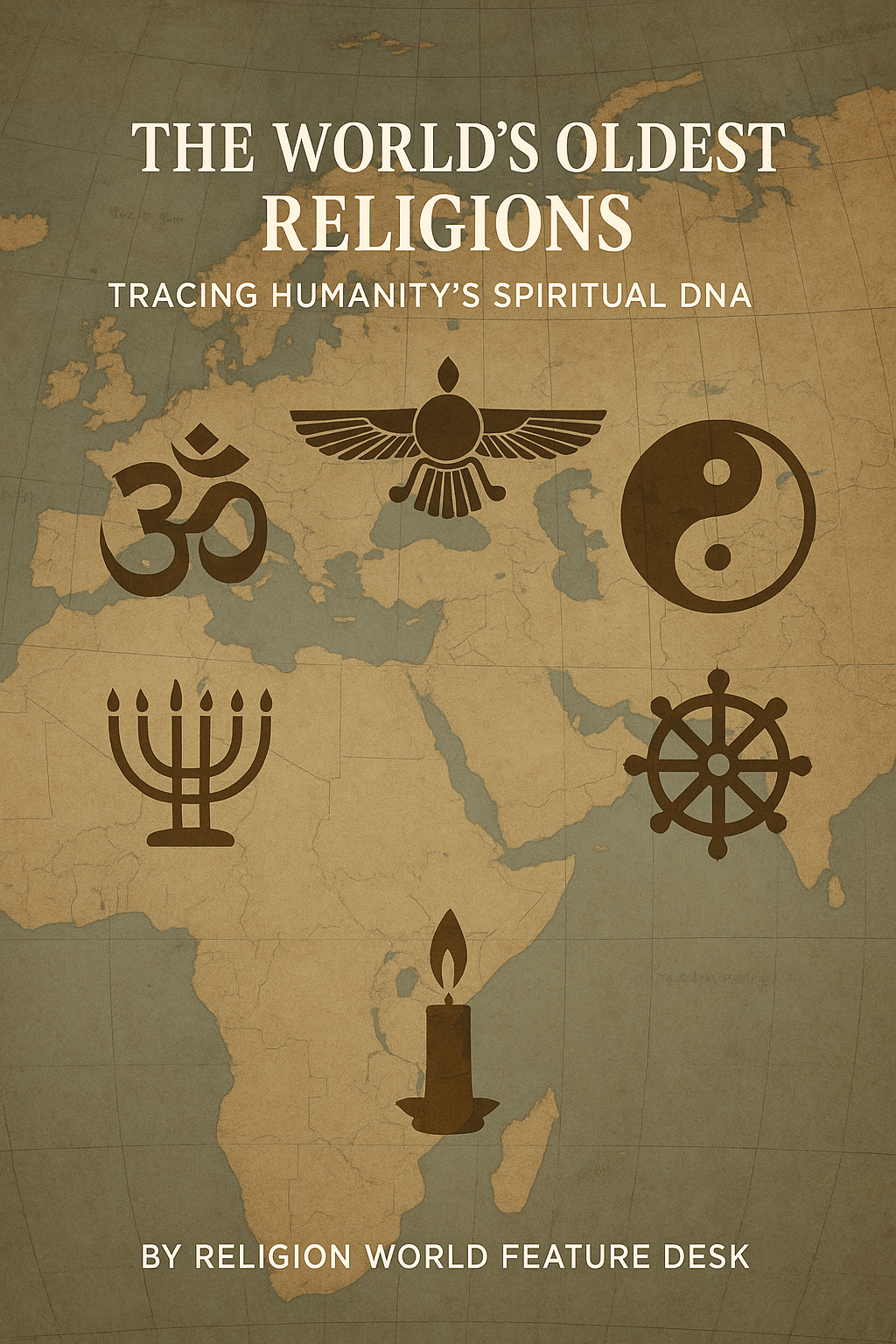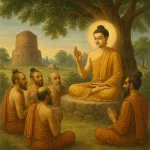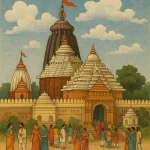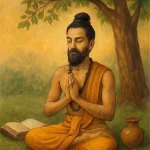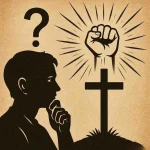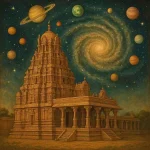🌍 The World’s Oldest Religions: Tracing Humanity’s Spiritual DNA
By Religion World Feature Desk
Religion is humanity’s oldest conversation — one that began long before writing, long before temples, and perhaps even before language. It’s the story of how early humans tried to make sense of thunder, stars, birth, and death — and how those attempts slowly evolved into the great faiths that still shape billions of lives today.
Let’s journey back through time to explore the world’s oldest surviving religions, their origins, and their enduring legacies.
🕉️ 1. Hinduism – The Eternal Way (Sanātana Dharma)
Origin: India, over 4,000 years ago
Sacred texts: Vedas, Upanishads, Bhagavad Gita
Core belief: The universe is cyclical; the soul is eternal and reborn until liberation (moksha).
Often called the oldest living religion, Hinduism isn’t the creation of a single prophet or a single moment. It’s an ever-evolving way of life that grew organically from the spiritual practices of the ancient Indus Valley and Vedic civilizations.
Its philosophy is as vast as the cosmos it describes — from the fiery hymns of the Rigveda to the deep introspection of the Upanishads. Over centuries, it gave birth to yoga, meditation, karma, and the concept of dharma — moral duty.
Even today, more than a billion followers continue to celebrate this rhythm of cosmic order through festivals like Diwali, Holi, and Navratri.
🐃 2. Zoroastrianism – The Fire of Truth
Origin: Ancient Persia (modern-day Iran), around 1200–1000 BCE
Founder: Prophet Zarathustra (Zoroaster)
Sacred text: Avesta
Core belief: The eternal struggle between good (Ahura Mazda) and evil (Angra Mainyu).
Before Islam and Christianity, Persia’s great faith was Zoroastrianism, a religion of fire, purity, and moral clarity. It introduced concepts that would later echo in Abrahamic faiths — heaven and hell, angels and demons, and the final judgment.
The eternal flame burning in Zoroastrian temples symbolizes truth, and though its followers — the Parsis and Iranis — are few today, their impact on global spiritual thought remains luminous.
🐉 3. Taoism – Harmony with the Way
Origin: China, around 500 BCE
Founder: Laozi (Lao Tzu)
Sacred text: Tao Te Ching
Core belief: Living in harmony with the Tao (the Way), the underlying natural order of the universe.
Taoism isn’t about worship — it’s about alignment. Its wisdom whispers that the river doesn’t fight the current; it flows with grace. From the philosophy of yin and yang to the practice of Tai Chi and Feng Shui, Taoism shaped Chinese art, medicine, and governance for millennia.
It teaches us to find balance between opposites — softness and strength, action and stillness — a lesson the modern world could surely use more of.
🕎 4. Judaism – The Covenant with One God
Origin: Middle East (Canaan/Israel), around 2000–1500 BCE
Founders: Patriarchs Abraham, Isaac, and Jacob
Sacred text: Hebrew Bible (Tanakh)
Core belief: A covenantal relationship between God and His chosen people.
Judaism introduced the revolutionary idea of monotheism — one universal, moral God. Its ancient stories — from Moses parting the Red Sea to the Ten Commandments — continue to shape Western law, ethics, and spirituality.
Jewish thought seeded both Christianity and Islam, making it one of the most influential spiritual lineages in human history.
☸️ 5. Buddhism – The Path to Enlightenment
Origin: India, 6th century BCE
Founder: Siddhartha Gautama (the Buddha)
Sacred texts: Tripitaka, Mahayana Sutras
Core belief: Liberation from suffering through mindfulness, compassion, and detachment.
When Prince Siddhartha sat under the Bodhi tree and attained enlightenment, he didn’t create a religion — he discovered a truth about suffering and the mind.
Buddhism spread across Asia, adapting uniquely in each culture — Zen in Japan, Theravada in Sri Lanka, Tibetan Buddhism in the Himalayas. Today, mindfulness and meditation — core Buddhist practices — have become global wellness trends.
🐫 6. Shinto – The Spirit of Japan
Origin: Japan, pre-500 BCE
Core belief: Worship of kami (spirits of nature and ancestors).
Before Buddhism arrived, Japan already followed Shinto, a deep reverence for the divine in everything — the mountains, the rivers, even the cherry blossoms.
It’s not dogma; it’s devotion to harmony with nature. Every shrine, every festival, every ritual cleansing with water keeps this connection alive — making Shinto less a religion and more a national heartbeat.
🕯️ 7. Indigenous and Tribal Faiths – The World’s Hidden Wisdom
Before all scriptures and temples, there were shamans, spirits, and sacred fires. Indigenous religions — from Native American spiritualism to African traditional beliefs, Aboriginal Dreamtime, and Siberian animism — are humanity’s original dialogue with the divine.
They remind us that spirituality is not about dominion, but relationship — with earth, ancestors, and all living beings.
🌅 Why These Ancient Religions Still Matter
These aren’t relics of the past — they’re living traditions that continue to shape moral values, political systems, and cultural identities.
Each one answers the same timeless questions in its own language:
Where did we come from?
What is the purpose of life?
How should we live?
And even after millennia, they all whisper the same truth — that the divine is never far from human life.
✨ Conclusion: Faith as Humanity’s First Innovation
The oldest religions are not just about gods or rituals — they’re about meaning. Before we built empires or invented science, we built stories that explained the stars.
And maybe, in an age of AI and algorithms, remembering those stories isn’t nostalgia — it’s renewal.

